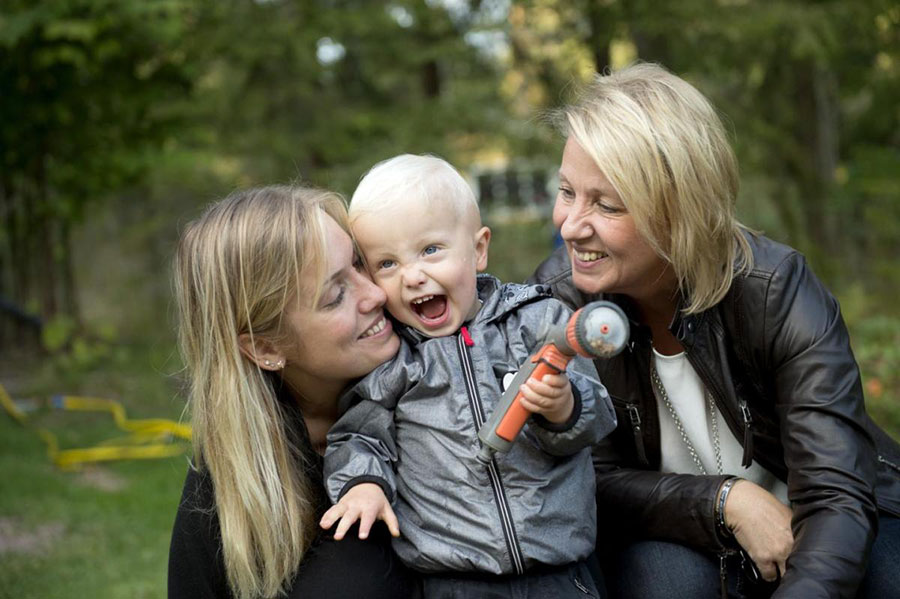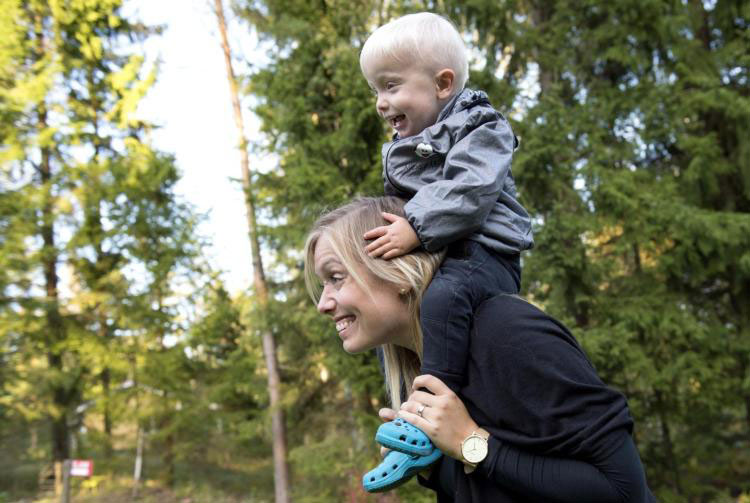BERGSHAMRA, Sweden – Emelie Erickson and her son were born from the same womb. When she was 15 years old, doctors told her she would never be able to carry children of her own because she was born without a womb.
Not only did she deliver her baby years later but she also became the first woman to have a child after receiving her mother’s uterus. Erickson started to read information about scientists working to create organs from stem cells in her early 20s and then heard about Mats Brannstrom, a Swedish doctor who is dedicated to research into the matter.

Her son Albin was born nearly two years ago, and she decided to share her story now that she is 30 so other women can be filled with hope. She wants this to be a reality for everyone who wishes to have a child, and their only chance is through a womb transplant.
“It’s like science fiction,” Eriksson told the Associated Press at her home north of Stockholm. “This it’s something that you read in history books and now in the future when you read about this, it’s about me,” she expressed.
She said she and her husband want to explain to their son the story behind his miraculous birth even though he may not understand everything his mom and grandma had to go through and the many years of research and experiments the doctor dedicated his life to.
Marie Erickson, her 53-year-old mother, thought this was something that could only be possible far in the future. Still, she encouraged her daughter Emelie to try by telling her she no longer needed her womb because she didn’t want any more children. She told her it was her only chance to have a child and she should take it, according to a report by the New York Daily News.
Dr. Brannstrom is now the only person in the world to deliver babies from women with transplanted uterus. Dr. Brannstrom has been able to do this five times. All other attempts have failed in the U.S., Saudi Arabia, and Turkey. Current efforts are being made in China, Britain, France, and the Czech Republic.
The first of his successful deliveries occurred in 2014, and the fifth baby was born in January. The next is due in early 2017.
He believes the procedure will one day be common and is currently working with doctors at Harvard Medical School and the Mayo Clinic in the US, among other doctors elsewhere. Their efforts focus on perfecting the operation.
Two other doctors who used to be part of Brannstrom’s team have performed four womb transplants at Baylor University in Texas. One of the cases turned out to be successful, but the woman will have to wait some time before trying to tempt a pregnancy.
Emelie’s husband agreed to go ahead after he made sure Bannstrom was not “some lunatic doctor.”
Dr. Brannstrom accepted Emily and her mother into his trial testing the pioneering transplant after dozens of medical tests. Ms. Eriksson thought maybe there was a small chance for her to carry her own child and her husband Daniel Chrysong agreed with the plan after he met the doctor, but it was really hard for him to believe they would ultimately have a baby.
Albin’s mom had to be given doses of steroids to help her overcome the two rejection episodes she experienced in the months after the surgery. A year passed, and she was ready to try to get pregnant. She and her husband created a single embryo during in vitro fertilization and then the doctor’s team transferred it into her womb.
They were disappointed to hear that the first pregnancy test returned a negative result but a week later a second test revealed they had been finally able to conceive a baby.
It wasn’t until Ms. Erickson heard her newborn scream that she was convinced they had succeeded. For his part, the new daddy fainted and the anesthesiology nurse had to watch over him in the hospital room.

This transplant procedure has surprised many experts in the field
An infinite number of critics previously argued the procedure was too dangerous medically unnecessary and impossible. But Dr. Brannstrom ignored them and begun a serious research project after a young Australian cervical cancer patient ask weather in Souris transplants were a possibility. Doctors told her she had to lose her womb if she wanted to survive.
In 1999, successful uterus transplants were performed in mice and tests were carried out in rats, pigs, sheep, and monkeys. The operation was first performed on humans 11 years later.
Several fertility experts are also surprised because wombs in post-menopausal women have proven to be able to grow healthy babies after being transplanted in spite of their age.
Even though younger organs are supposed to work better, organs from older women become rejuvenated after doctors give them the doses of hormones. This happens exclusively in the case of uterus transplantation.
Source: New York Daily News
